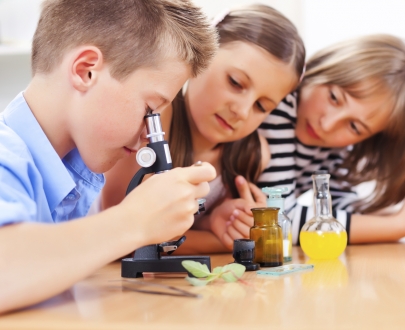
Self-regulation is currently a big educational buzzword in Canada and has informed the development of BC's Education Plan[1]. But what is self-regulation, exactly? And what’s the theory behind all the buzz?
Defining Self-regulation
In a nutshell, self-regulation refers to how people deal with stress. The body naturally “revs up” to give itself more energy to deal with something stressful, then “revs down” to conserve energy when it perceives the stressor is dealt with. People with effective self-regulation optimize their response to stress. They spend less time in ineffective states, such as being too revved up (which can look like being “stressed out”, overwhelmed, or “hyper”) or too-revved down (for example, “zoned-out”, bored or sleepy).
If you are able to manage your own energy state, and all the emotions and behaviours that go with that, you are able to be calm, focused and able to learn. The ability to self-regulate is also increasingly being linked to long-term well-being[2]. For example, recent studies have shown links betwee self-regulation and memory, risky behaviours, personality disorders, obesity, and other chronic conditions.
Stuart Shanker[3] is a leading expert on self-regulation in children. He notes that sometimes children who are not able to self-regulate effectively are punished for “acting out” when they are simply doing their best to cope with their stress. Shanker suggests that modifying a child’s environment to decrease their stress, then teaching them how to handle stress better makes more sense than punishing them for not having better skills. Self-regulation is not about iron-clad self-control or just being more compliant. Instead, the lens of self-regulation helps parents and educators understand why a child might be exhibiting challenging behaviours and what can be done to help. For example, if a child is too fidgety to learn, instead of simply telling them to sit still, a teacher might ask if she needs to run around the school a few times or if she needs a snack. The goal is to address the underlying cause, not merely the symptom, and also teach the child how she might recognize her own stressors and take care of it herself.
Being Alert and Engaged
People who self-regulate effectively spend more time being alert and engaged. Alert and engaged is the stress “sweet spot” where we can learn and work most productively.
Consider some of your own practices that help you either revv up or revv down to that sweet spot. You might play energizing music when working out or cleaning the house, go for a walk when feeling upset, or take a bath before bed to make it easier to sleep. A child who sucks a thumb when they are upset is self-regulating. The good news is that self-regulation is a learned skill that can be strengthened with practice and training.
Self-regulation can be improved by learning to monitor and adjust:
-
the physical “revving up” and “revving down” processes and
-
emotional states.
It can also be improved by developing:
-
cognitive skills, such as paying attention, inhibiting impulses and dealing with distractions, and
-
empathy and pro-social interpersonal skills.
Self-Regulation Reflection at Home
-
What are your child's stressors?
-
How much active and or imaginitive play occurs every day?
-
How emotionally "literate" is your child?
-
What are the self-regulation strategies that your child is already doing to successfully revv up or revv down her energy level?
British Columbia is working to make public education more relevant to reflect the world students now live in, and the world of their future.
"While a solid knowledge base in the basic skills will be maintained, to better prepare students for the future there will be more emphasis on key competencies like self-reliance, critical thinking, inquiry, creativity, problem solving, innovation, teamwork and collaboration, cross-cultural understanding, and technological literacy. We can also connect students more directly with the world outside of school, with increased focus on learning these skills across topic areas."
BC Education Plan
Calm, Alert and Learning, written by Dr. Stuart Shanker and published in 2014, offers a review of the research linking self-regulation and long term well-being.
Stuart Shanker is the leading researcher of The Canadian Self-Regulation Initiative which works to share the promising practices of self-regulation programs across Canada.
Find Shanker's overview of self-regulation in Calm, Alert and Happy.